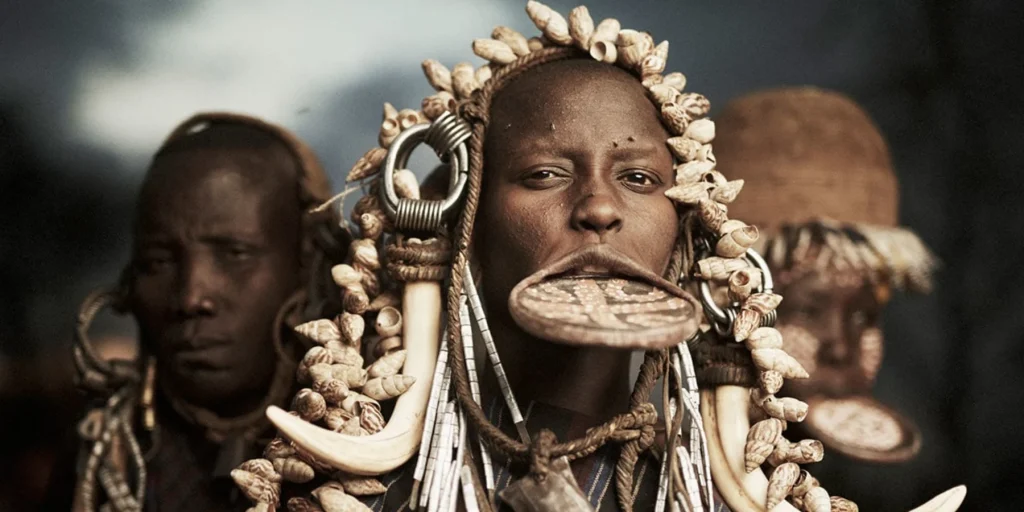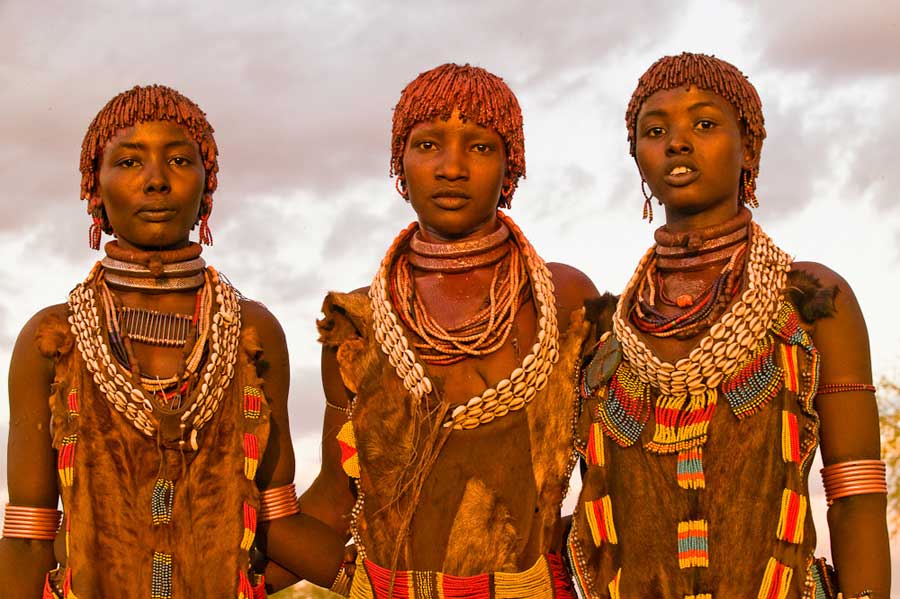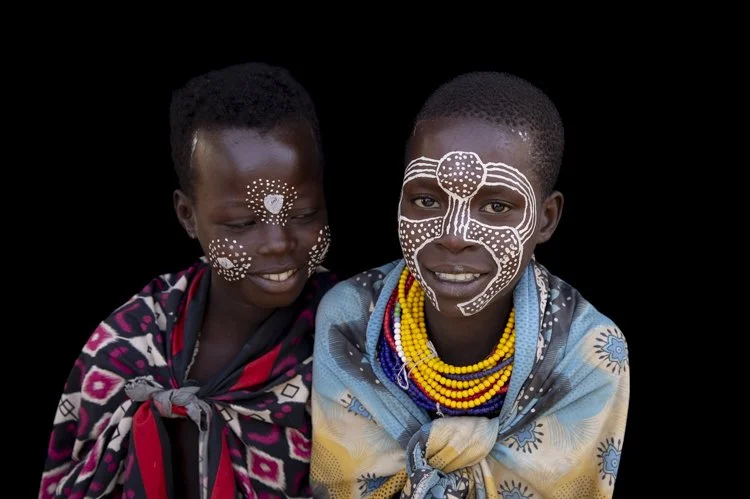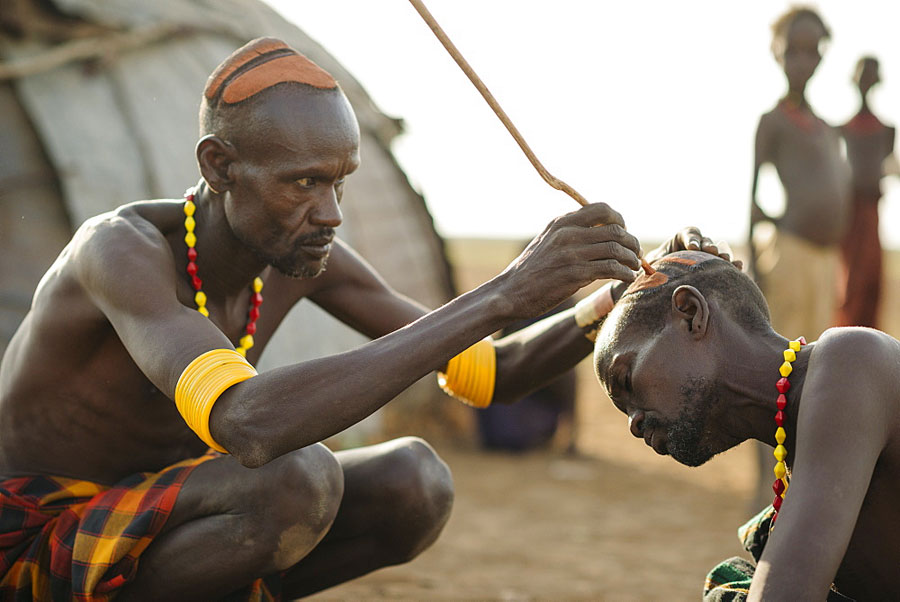
The Mursi, semi-nomadic cattle herders residing near Jinka, are renowned for their striking lip plates. ornate clay discs inserted into women's lower lips as symbols of beauty, maturity, and bride wealth value. These plates, starting small at age 15 and growing to 20 cm in diameter, reflect the tribe's unique aesthetic standards and social structure.
The Hamer, celebrated for their vibrant red ochre braids and intricate body scarification, inhabit the Turmi area and are famous for the exhilarating Bull-Jumping Ceremony—a rite of passage where young men prove manhood by leaping across 15–30 castrated bulls. This multi-day event features the evangadi night dance, where women in goatskin skirts receive ritual whippings as symbols of devotion, leaving permanent scars of honor. Hamer society values cattle as currency, with elaborate headdresses of ostrich feathers denoting social status.


The Karo, numbering around 200 families along the Omo River near Turmi, are masterful body painters who transform their skin into living canvases using white chalk, charcoal, and natural pigments to create symbolic patterns representing fertility, protection, and social status. This riverine tribe, skilled fishermen using handmade canoes, lives in circular thatched huts and maintains close ties with neighboring Hamer through intermarriage and trade.
The Daasanach, also known as the "Geleb," are resilient semi-nomadic pastoralists along the Omo-Akobo river junction near the Ethiopian-Kenyan border, known for their distinctive cicatrisation scars—raised patterns on skin symbolizing bravery and clan identity. This matriarchal society, where women hold economic power through cattle ownership, practices transhumance herding and river fishing while facing challenges from drought and border conflicts.
